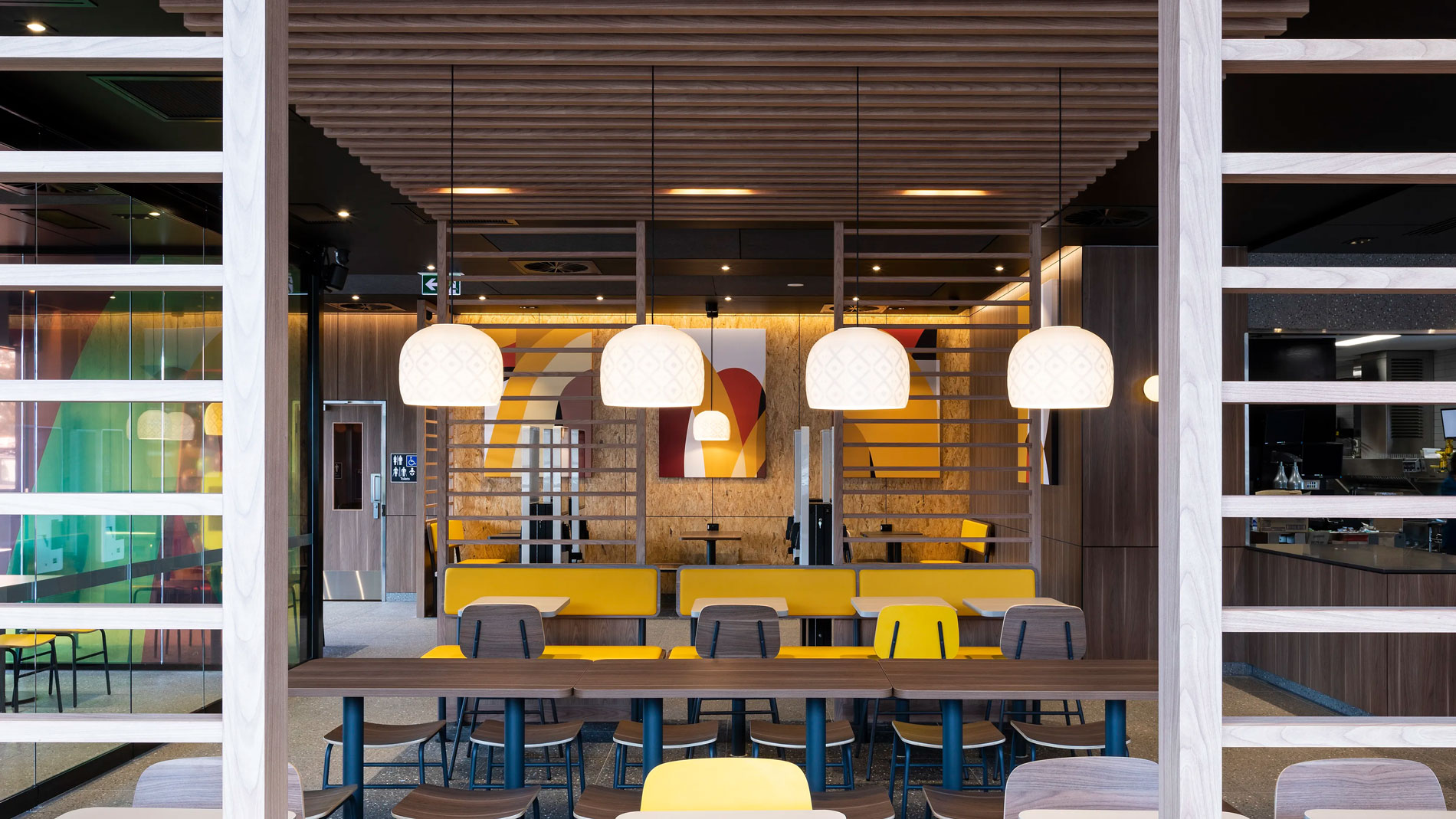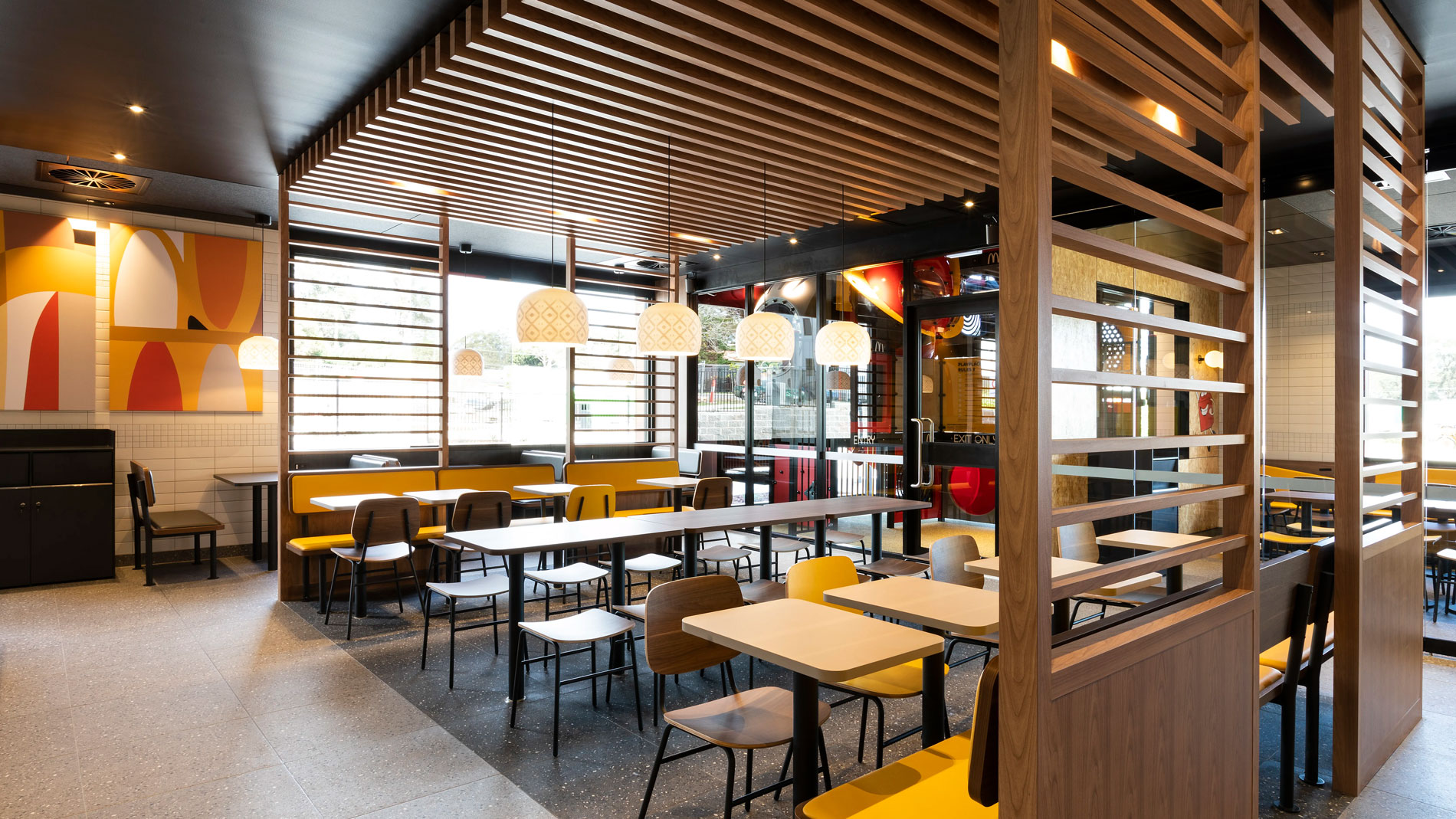15 July 2024
Fast-food restaurants are hardly immune to global food and shopping trends, and customer expectations in this sector are also constantly evolving. This is one of the reasons why McDonald's, the industry leader, is trying to make its restaurants around the world look more sophisticated with a new lighting concept. At the same time, its decision to 3D-print the lamps is meant to help the company become more sustainable.

In total, the American fast-food chain is designing these furnishings for around 38,000 locations (both new and existing) around the world. “We need a scalable solution within a short lead time. It also needs to be highly durable, and we want it all at a competitive cost,” explains Marc Pochert, senior director of global design integration at McDonald's Corporation. At the same time, he adds, McDonald’s wants to own the corresponding IP rights.
Very close to the original design idea
In one of the designs, entitled "A Touch of Archery", customized, hemispherical, translucent pendant lighting was meant to shimmer like velvet. The embossed patron also needed to be slightly darker, but in a warm tone, as Pochert recalls. However, the design seemed difficult to implement due to the difficult requirements in mold making.

Then Pochert became aware of the 3D-printing process offered by Philips MyCreation. In the end, realizing the original design already proved possible in the second round of samples. “We were so close to the originally intended design that we never thought it could be possible. We had the final round of samples approved in less than three months, which is an unbelievable speed when it comes to the production of a pendant light,” explains Pochert. “It really does shimmer like velvet – the pattern is just stunning.”
Distributed production strengthens sustainability
At the same time, McDonald's has ambitious targets with regard to sustainability. By 2040, the company wants to reduce its carbon footprint by 60 percent. According to Pochert, 3D-printing the new lights can help with this, because “once we had decided on the design aspect, we recognized that with 3D printing, we would also benefit from using sustainable materials.” Since McDonald's plans to implement its new lighting solution in more than 100 countries, distributing production through Philips MyCreation will also play an important role. “Another advantage is that we don't have to keep any stock on hand. This makes us flexible and helps reduce costs,” Pochert offers in summary.
FURTHER INFORMATION:
Tags
- Construction and architecture
- Design and product development
